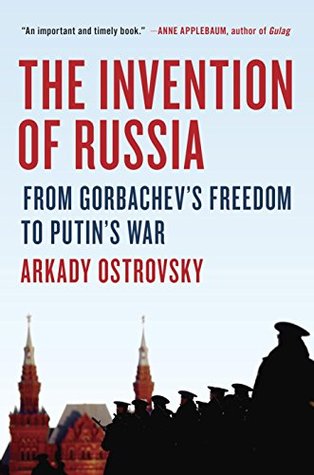More on this book
Community
Kindle Notes & Highlights
Five days after the airing of the story about the crucified boy, the Russian-backed separatists brought down Malaysian flight MH17, killing all 298 people on board. The plane was hit by a Russian-model BUK missile fired from the rebel-held territory. It was probably mistaken for a Ukrainian military aircraft.
The claim that Russia is at war with America and the West has been drilled into the minds of ordinary Russians. Those who protested the war have been labeled national traitors and collaborators with Western-sponsored fascism.
Less than a year later, Nemtsov was shot dead next to the Kremlin. He had left a restaurant in GUM—Moscow’s glitziest shopping mall, facing Red Square—accompanied by his girlfriend and was walking across the bridge when an assassin fired four bullets into his back.
Television images work like drugs, creating a sense of elation, destroying judgment and intelligence, lowering moral barriers and suppressing inhibitions and fear. No enemy of Russia could have caused as much harm to the country as has been inflicted by those who have been pumping these images into the bloodstream of the nation.
The vast majority of Russians now contemplate the possibility of a nuclear war with America, and 40 percent of the younger ones believe that Russia can win, as if war were a video game in which people have lives in reserve. Few Russians are prepared to pay for the real cost of this game.
This propaganda feeds not so much on ignorance as on resentment, a mixture of jealousy and hostility. Having an imagined but mighty enemy—America—makes people feel noble and good. It compensates for personal weaknesses and failures and frees them from the need to justify themselves to anyone and above all to themselves. But Russia is running the risk of overdosing on hatred and aggression. The euphoria and nationalist frenzy cannot just be switched off like a television set: all that whipped-up passion does not simply vanish.
Formally Russia stated that it was fighting ISIS, but its bombs fell on areas held by the moderate opposition supported by the West.
Dmitry Kisilev explained the new plot to his Russian audience in his weekly news program: “In Syria, America stands on the side of the terrorist caliphate. Together they are trying to destroy Syria as a secular state.” Proud Russia was defending the secular state against America.
Historically Russia has often used aggression and territorial expansion as a form of defense against modernization. This impulse has sometimes undermined Russia’s own territorial integrity.
The Russian state is seen today not as providing essential services but as a source of injustice and corruption. Some decentralization of Russia seems all but inevitable; the question is how far it will go.
However, in transliterating references and citation sources provided in the endnotes, I use the Library of Congress system of transliteration adopted by most English-language library catalogs.


